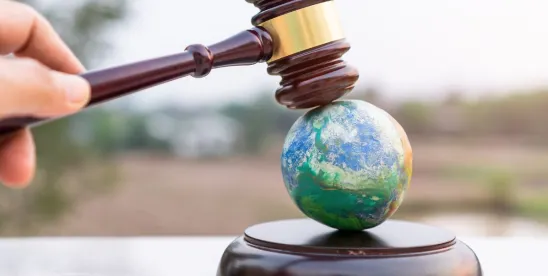The popular dialogue about environmental policy implies that it is formed by an army of politicized Washington bureaucrats reined in by process limitations imposed by the US Constitution as interpreted by jurists often advancing their own political causes. To be sure, case decisions matter as do elections and broader social debates, like those we emphasized here.
We outlined reasons why the federal EJ fever cooled this past April. Six months in, much of the movement in the EJ field involves state governments. Below, we break down why much focus on EJ issues has shifted to the states.
While Federal Courts Dictate Caution, State EJ Activities Continue
Keen observers of federal litigation see the Fifth Circuit as a preferred forum for conservative-leaning policy challenges. Recent weeks have seen the Fifth Circuit hear arguments in the RISE St. James v. St. James Parish which involves various local groups challenging local government’s zoning decisions on the grounds that they result in EJ impacts. (For background, see here.)
In a Louisiana federal trial court, Louisiana is attempting to preclude the US Environmental Protection Agency (EPA) from enforcing its regulations under Title VI of the federal Civil Rights Act of 1964, which preclude actions having a “disparate impact” or discriminatory effects on certain groups without any showing of discriminatory intent. (For background, see here.) In August, the federal court made permanent a preliminary injunction granted in January, essentially barring EPA and the US Department of Justice from enforcing their Title VI “disparate impact” regulations against Louisiana. So for now, at least in Louisiana, “disparate impact” regulations do not apply.
However, EPA and other federal agencies have indicated their intent to enforce these regulations elsewhere, as emphasized in EPA Office of External Civil Rights Compliance guidance entitled Civil Rights Guidance on Procedural Safeguards: Requirements and Procedural Safeguards, which was released in August.
Individual and private groups continue to advance civil rights complaints. This year, informal resolution of EJ-related claims in states including Michigan (environment related, stemming from a state complaint), Illinois (environment related, resulting from a federal complaint), and Alabama (federal but transportation related) have occurred.
State Laws Can Advance EJ
Separate from federally supported efforts to advance EJ, actions relying on state authorities continue to advance. Two examples include:
- New York: New York has both constitutional and statutory tools relevant to EJ. Efforts by EJ advocates have sought to use New York’s constitutional “Green Amendment,” which was created in 2021 to advance EJ, but efforts have not yet been successful. New York statutory law — namely Environmental Conservation Law Section 70-0118, which is slated to go into effect on December 30 — will prohibit New York state regulators from issuing permits that may contribute more than a de minimis amount of pollution “to a disproportionate pollution burden” on an EJ community.
- Louisiana: While federal civil rights regulations can not be applied against Louisiana, a recent state court decision holds that Louisiana’s public trust doctrine requires consideration of EJ impacts. As we noted in February, RISE St. James v. LDEQ, decided in January 2024, found that Louisiana’s public trust doctrine “require[d] consideration of ‘economic, social, and other factors’ broad enough to constitute an analysis of environmental justice, as defined by EPA.” In the court’s view, the EJ analysis that LDEQ conducted was sufficient so as to not be arbitrary and thus supported LDEQ’s permit issuance. (Since January, the Louisiana Supreme Court has declined to review this decision, allowing the lower court decision to go into effect, as noted in the article here.)
Federal Efforts Continue
While much of the focus on EJ has shifted to the states, federal efforts to address EJ continue, with the major effort this year being new “improvements” to the Lead and Copper Rule. This rule requires US drinking water systems to identify and replace lead pipes within 10 years. When announcing the rule, the Biden Administration noted that lead service lines have long been considered a priority EJ issue. The “improvements” combine regulatory changes in coordination with significant funding and technical assistance to help support removal of lead pipes in US water infrastructure. Further information on these “improvements” are available on EPA’s webpage.



 />i
/>i

